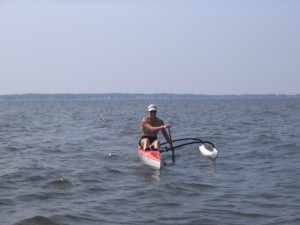 Caroline Brosius is an internationally recognized distance kayaker who has competed in some of the world’s most epic global races. Her sports endeavors have taken her throughout the US and Hawaii as well as to Canada, Panama, New Zealand and China.
Caroline Brosius is an internationally recognized distance kayaker who has competed in some of the world’s most epic global races. Her sports endeavors have taken her throughout the US and Hawaii as well as to Canada, Panama, New Zealand and China.
I grew up racing sailboats; my dad built kayaks for his Scout Troop when I was young. My uncle, John (Jack) Brosius, III, made the 1972 Olympic team for sprint kayaking; so the concept of pursuing a dream, and of being the best at something you did, was always there.
Before I was a kayaker, I was a runner. I started running in high school (Stadium High School in Tacoma, WA) and joined the cross-country team. I fell in love with the idea of running trails, and with the fact that running opened more territory to explore. I had always liked hiking and biking as well. One day, while out on the trails in Berkley, CA, I started running with a guy who asked me how far I was going. I responded, “50-60,” meaning minutes. He said he was running 50-60 as well that day – but he meant miles! That was the first time I heard of ultra-running, and I was fascinated.
I continued to run cross country and track in high school, and in my sophomore year in college I rowed with the Trinity College Boat Club at Trinity College in Dublin, Ireland. I coxed (steered) for the mens novice team and learned how to row in singles, coached by a couple of the rowers on the team. After I moved back to Seattle, I rowed for my last two years in college. After college, I visited my uncle in Maryland. He took me out kayaking, and I fell in love with the sport. And so went my transition from rowing to sprint kayaking. Eventually, I would move up to the marathon canoe and outrigger, where I made a name for myself internationally.
By 1996 I qualified for the Olympic trials for the sprint kayak event by making the finals in the 1995 Nationals, which were held in Seattle. The Olympic trials were held in April of 1996 at the Olympic Training Center in Chula Vista, CA. I drove out from DC and took 6 weeks off work for the trials; but in the end, I didn’t make the team.
I used that as an opportunity to finally train for and run a marathon, a long-term goal of mine. I chose the Marine Corps Marathon since by that time I was living in the DC area. My running partner, a fellow canoer named Mitch, was following a training schedule and we ran together 3-4 times a week, along with our paddling workouts. As I was training I also raced in sprint, kayaking, and won several medals at Nationals in August of 1996. I qualified for the National traveling team to go to the Champion Knock-out in Maine that fall. Champion Paper was a sponsor, and the Knock-out was 200-meter races held in a drag race style. That October, I ran the MCM in 3:56.
Endurance Kayaking – The General Clinton and Beyond
Up till 1996 I had been racing only 2000 meters in rowing, and my longest run was about 12K. From 1991 to 1996 I focused on short, sprint, 500-meter kayak races. Running the marathon changed that, as did my transition to endurance kayaking.
In the fall of 1996, my friend Cheryl, who belonged to the same canoe club I did, asked me if I wanted to be her partner for the General Clinton 70 Miler. This was a totally different type of race for me. The marathon C2 (double person boat) is a totally different style of paddling: canoe vs. kayak, endurance vs. sport (e.g., 10 x 500 meter sprints vs. 2 x 1 hour steady state) and the front seat requires learning steering strokes – which takes time, as the kayak has a rudder. [ http://en.wikipedia.org/wiki/Canoe_racing]
So in 1997 I competed in my first General Clinton race with Cheryl and finished second. It was a lot of fun and required entirely different planning than the sprint paddling events I had done; you had to figure out food and water and sustaining yourself over 7-8 hours. I have since competed in the General Clinton four more times, and I enjoy it every year. The different water conditions and the demands of the river make it challenging and fun at the same time.
Endurance Kayaking to Outrigger Racing to Adventure Racing
Outrigger racing was just beginning on the east coast in 1997, and one of the other members of my canoe club was putting together a team to go to Hawaii to compete in the Na Wahine oh Ke Kai (Women of the Sea) – an OC6 canoe with 6 people, open ocean outrigger race, one of the biggest outrigger events in the world. The race is approximately 40 miles from the island of Molokai, to Waikiki Beach on Oahu. So naturally, I also competed in my first OC6 Molokai to Oahu race.
While training for the Hawaii race, I befriended another person in the club who was into adventure racing – which, like outrigger racing in 1997, was not yet well-known…and finding people who participated on teams was difficult. I had heard about adventure racing and thought it sounded like fun, since you got to do a bunch of my favorite activities at the same time. She introduced me to some friends of hers, and I did my first race in the spring of 1998 – and I was hooked! I did another race up in Canada, and we came in second overall in that one. In 1999, I did the Beast of the East – which is how I first met the Odyssey Adventure Racing Group and Steve Kirby, who is the race director for the Tampa Double IRON and the Lake Anna Double and Triple IRON races.
Since 2000 I have alternated adventure racing and paddling, though I always paddled and raced with my team at WCC. I started racing OC1 (single person outrigger) in 2001, and my goal became racing in one of the between-the-island races in Hawaii. I was fortunate enough to become good friends with some folks in Hawaii, and I went over in the spring during the singles racing seasons in 2002, 2003 and 2005 to gain more ocean experience and to train with some local outrigger clubs on the big island of Hawaii. In 2006 I was introduced to someone from the island of Kaui, who told me I should enter the Maui to Molokai Challenge and come on over the following spring to visit; he would host me for a couple of weeks before the event. In April of 2007 I was on the starting line in Maui in an OC1, and ready to go! It was a great experience; I never knew a boat could go that fast!
I held my own with the locals, though my lack of downwind and surfing experience definitely made it a challenge. I will never forget meeting a sea turtle, swimming all by itself in the channel between the islands at a point in the race where I was completely alone and beginning to wonder if somehow I had missed the buoy I had been told to find. Within minutes of seeing the turtle just hanging out and enjoying the waves, I heard the bell and knew I was right on target. It’s moments like those that make the journey worthwhile. Each event usually has some sort of moment that reaffirms why you are out there. My moments usually seem to involve finding or saving turtles!
I raced OC1, OC2 and OC6 up and down the east coast, including the Blackburn Challenge Open Water race (20 miles) up in Gloucester, MA; I’ve won both OC1 and OC2 places in the Mayor’s Cup Race around Manhattan Island, NY. I have also raced marathon canoes in the General Clinton 70-miler and the Adirondack Ultra Challenge, a 3-day, 90-mile event in upstate New York.
I volunteered at a couple of adventure races for Odyssey Adventure Racing in the early 2000s, Primal Quest in Montana in 2008, and some ultra-triathlon events. I like to give back to the sport; it has allowed me to meet some amazing athletes, watch them compete and learn from them. I have also been able to network with people I’ve met, and enjoy training and/or competing with them later on.
Knowing Your Limits: Celiac Disease
Despite all my training, in 2006, after not feeling well for 2-3 years, I was diagnosed with celiac disease. It has taken an additional 3-4 years to recover fully, as well as to figure out how to train in endurance sports, and how to adjust my diet and overall training routine without getting run down.
I realized during this period that I was over-trained and had not allowed myself sufficient time to recover after a variety of injuries over the years. You know how it is – it’s just one thing, so you wait a little bit and start training again, then there’s another and another and before you know it, you start saying, “I have never had a serious injury except….”
I have been seeing a massage therapist the past couple of years; she has both put me back together and helped me find the balance between pushing hard and moving forward, and just pushing and getting nowhere. It has been key to my recovery. I see her at least twice a week, and I consider her to be integral to my overall and continuing success.
I have also taken up kickboxing – first one-on-one with coach Vivek Nakarmi, who was a national champion at his weight class, and now as part of a group at his gym. He focused on building and balancing my core strength, and I feel stronger and more fit than I have in years.
Training
My new motto: Train smarter, not so hard that you break yourself…again. (Better than my old motto: Queen of Overtraining, with which my chiropractor had crowned me.)
I train primarily with the women’s outrigger team at my canoe club here in Washington, DC. It’s a group of about a dozen women who range in age from 25-50 and who have varying levels of ability. The one thing we all share is the desire to train together and to make the canoes go as fast as possible. We do several races up and down the East Coast. I also train with a friend, Kelly Rhodes, who is the coach. She and I race in marathon C2, OC2 (outrigger C2) and individually in our OC1s. Kelly is my primary paddling partner; she coaches our outrigger team and is a mother of three. She and I are both driven to push ourselves to our limits and try new experiences – basically, a couple of Type A personalities who like to play hard.
There is a diverse group of members at the canoe club who also do endurance paddling, biking and running events, and a couple who have done 50K and 100-mile runs, and I train with them throughout the year as well. I have a couple of friends from adventure racing who have moved out of the area, but I visit and mix socializing with training events as well.
For clothing, I generally wear Patagonia mid-weight capilene and a variety of other technical gear received at races. I have more than I know what to do with sometimes! I like to layer in the cooler months, with a long-sleeve as a base and a short-sleeve over it. For our team uniform, our Outrigger Team participates in the Patagonia team offering.
I commute daily on my bike, and usually run, paddle, lift or do kickboxing as well. To limit the amount of gear I have to wear, I tend to wear tri-shorts (currently DeSoto and Zoot) as well as bike tights. For paddling in the outrigger, I wear Under Armour lycra shorts.
On Shore – About Caroline Off the Boat
I am currently single and living in DC with my cat, Rosencrantz, who unfortunately isn’t well-suited to be a real training partner – though he is wonderful to have waiting at home. He is always glad to see me when I return from an event.
One of my best training partners was my Jack Russell terrier, Gertrude, who was known at all the races for years. She passed away in 2008 at 16 years, after a full life of running and hiking with me day and night in all weather (her buff froze to her fur one night up on the Appalachian trail on a winter’s overnight training session with Chris Couldrey as we were training for the Endorphin Fix). She also went out in canoes and kayaks and rode in my backpack or in a basket on my bike.
My extended “family” consists of several close friends I have known from the canoe club for 15-20 years, as well as several long-distance friends I met through training and racing in various sports. I feel fortunate that each of my interests has generated a new group of friends with different interests.
When I am home, I enjoy reading and watching movies; I am a certified Netflix junkie. I have played guitar on and off and decided to start doing jigsaw puzzles as well.
I also like to volunteer when different opportunities arise at work, at the club or through friends, particularly when it includes the chance to get to know more about something I am interested in. I have been the host site coordinator for the annual Alice Ferguson Trash Clean-up, held every April within the Potomac Watershed, for the past 4 years and have partnered with the DC Surfrider Foundation for that event.
Work
I am an electrical designer and project manager at a consulting engineering firm located in Arlington, VA. We do electrical, mechanical and plumbing design for commercial office buildings, government buildings, and restaurants as well as a variety of other work throughout the DC/VA/MD areas. I have earned my LEED certification and primarily support senior engineers on large projects. I really like my job, and enjoy the challenges and learning opportunities that it presents.
My company has supported me in all my athletic endeavors, starting back in 1991 when I first moved here as a contract worker and continuing up to the present day. I always have considered them one of my primary sponsors.
I have been on sponsored teams, but I have never received direct individual sponsorship. As I would alternate my main focus year to year, from paddling to adventure racing and back, I never pursued any particular sponsors. I have considered the free entries or extra bit from a race director or friend within the sport to be my “sponsor”.
What drives me is the love of the outdoors, meeting new challenges and testing myself to see if I can achieve my goals. I also love to share the challenges with friends; when I am in an individual event, it is the thought of all the shared joys and pain and “learning experiences” – or, as my friend Chris and I would always say, “Plans B through G” – that would bring me through.
The continued ability to go and play with my friends and support teammates drives me, even though I do a lot of individual sports (running, biking, singles paddling) as well. I know I’m always just a phone call away from an awesome experience, as long as I am ready.
Financial Commitments to Sport
For years, I called my credit card my Dream Link. When I started racing, my budget was really tight; I would end up running up debt in the summer and working hard during the off-season to pay off the debt. My basic rule was that I had to have everything paid off before I could buy the next airline ticket! There were a few races that I would have loved to have done, but I didn’t have the funds available.
When I was training in sprint kayaking, I was working as a cashier and contracting at the engineering firm I now work for; but mostly I had low-paying jobs that offered great flexibility By 1996 I was in debt, and after trials I focused on paying that off while competing in what I could afford. I did not want to put myself in that position again, so I’ve balanced the desire for training, traveling and competing with the reality of finances. Basically, you have to find the comfort level you are willing to live with.


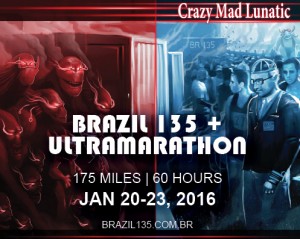
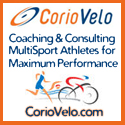
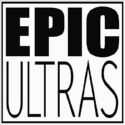
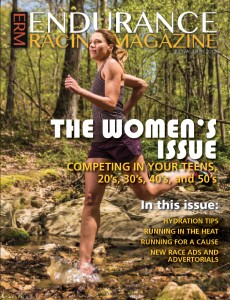
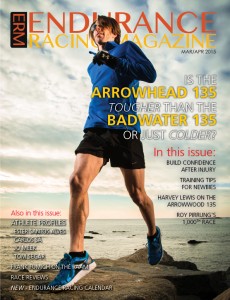
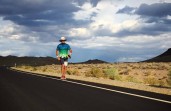
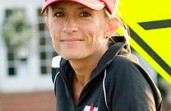
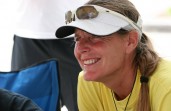
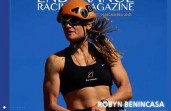


[...] amazing female athletes (among others), in this issue of Endurance Racing Magazine. Missy Kuck, Caroline Brosius and Michele Santilhano are the amazing endurance athletes who were featured this month as well. [...]